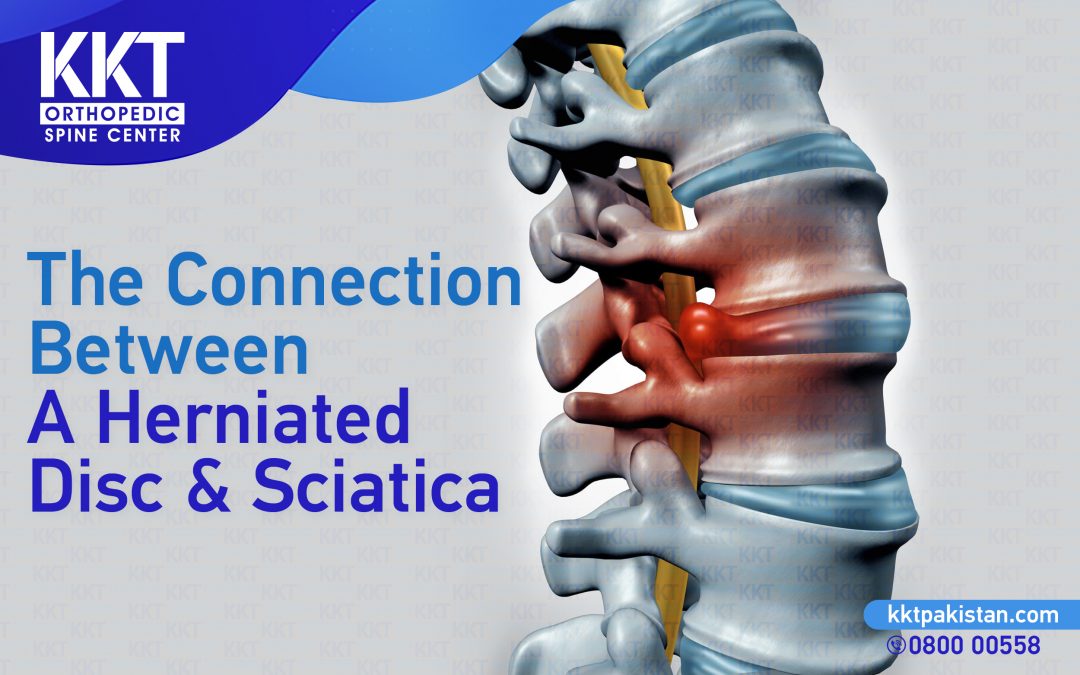Our spine consists of bones called vertebrae that are cushioned with discs. These discs are known as intervertebral discs. The outer tough layer of the discs is known as the annulus and the inner layer is called the nucleus. Intervertebral discs act as the shock absorbers for the vertebrae. Before jumping into the connection between the herniated disc and sciatica, understanding what they are is also important.
What is a Herniated disc?
Herniated disc or slipped disc is a spine-related condition in which a fragment of the inner part of the disc slips out of the annulus. The nucleus is pushed into the spinal canal through a tear in the annulus, therefore, pressing on the spinal nerves. Early-stage degeneration is when the discs can become herniated. Excessive pressure on the spinal nerves due to herniated disc(s) can cause pain. Slipped disc(s) are more common in the lumbar region of the spine, however, they can occur in any part of the spine. One of the major causes of neck pain is the cervical herniated disc.
Herniated disc symptoms:
Common symptoms of slip disc include the following;
- Pain radiating down the arm or legs
- Numbness, usually on one side of the body
- Burning sensation in the affected area
- Weakness in the muscles
What is sciatica?
Sciatica is the pain associated with the longest nerve of the body also known as the sciatic nerve. This type of pain radiates along the sciatic nerve pathway, i.e., from the lower back to the buttocks and down the leg. However, sciatica typically affects only one leg/side. Along with pain in the affected leg, sciatica also causes inflammation and numbness. Sciatic pain can be any of the following types:
- Burning sensation
- Excruciating pain
- Mild ache
- Sharp pain
Along with pain & numbness, other sciatica pain symptoms can include tingling or weakness in the affected leg/side.
Risk Factors for Sciatica:
Following are the risk factors for sciatica:
- Trauma or an Injury
- Age
- Extra weight
- Jobs that require heavy lifting
- Medical conditions like diabetes or osteoarthritis
- Lesser physical activity and exercises
- Smoking
The connection between Herniated disc and Sciatica:
One of the most common sciatica causes includes a herniated disc. Intervertebral discs are in close proximity to the spinal cord and nerve roots. This means if a disc slips out of its position can affect the nerve roots leading to pain and other symptoms. As mentioned earlier, sciatica is the nerve root that begins from the lower back and goes down the leg. A lumbar herniated disc can irritate the sciatic nerve leading to various symptoms (mentioned above).
Some lifestyle modifications for sciatica pain treatment include the following:
- Using a firm and comfortable mattress
- Maintain a proper sleeping posture or positions
- Maintain a proper sitting and standing posture
- Sit straight without crossing your legs.
- Keep proper back support for sitting
Exercises for Sciatica from a Herniated disc:
Various exercises can help reduce, control or alleviate the symptoms of sciatic pain caused by a herniated disc. Some of the strengthening and stretching exercises for sciatica pain include the following:
Nerve mobilization:
Sciatic nerve glide:
Follow the following steps:
- Sit upright on a chair.
- Lift your one leg, straightening your knee
- Note that, while doing so, keep your other foot flat.
- Now slowly bend the ankle upwards in a way that the toes are also pointing upwards
- Keep bending the ankle back and forth.
- Depending on the tolerance level, in order to put more pressure on the sciatica nerve; bend your head with your chin facing towards the chest. And try the same nerve glide.
- Repeat this exercise about 15 times.
Exercises for strengthening the abdominal muscles:
Single leg raises:
Follow the following steps:
- Lie down on the floor straight and tighten your stomach muscles.
- Gradually raise your one leg upwards to about 8 1o 12 inches from the floor.
- Hold the position for 6 to 10 seconds and slowly come back to the initial position.
When to seek medical attention for a herniated disc?
If you experience severe symptoms due to a herniated disc, consult a medical professional. KKT offers revolutionary non-surgical and non-invasive Canadian technology treatment for spine-related conditions including sciatica & herniated disc treatment. Get your consultation with KKT Orthopedic Consultants in Lahore, Karachi, Rawalpindi, and other KKT operational centers across Pakistan. To book an appointment with your nearest KKT center click on the link below.
